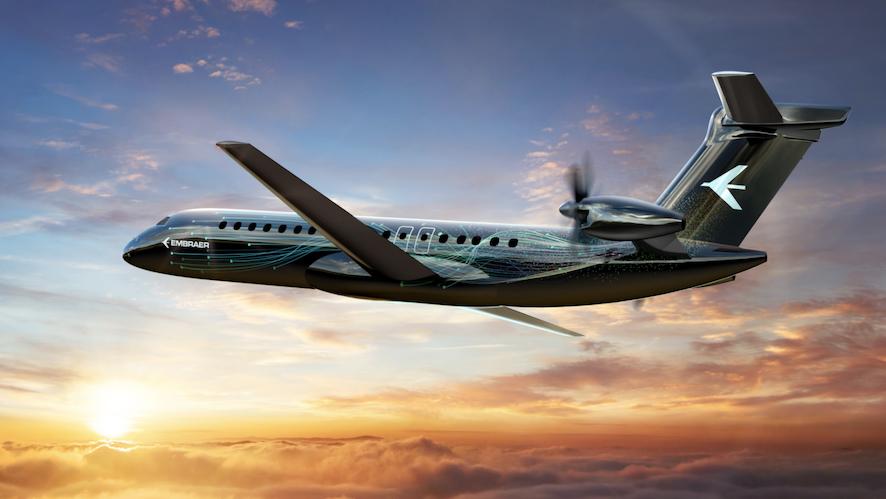
The aviation industry is under intense pressure to become more sustainable, and yet, as Embraer’s recent decision to put its next-gen turboprop plan on ice shows, the established OEMs seem unable, or unwilling, to bring a new airliner to market to respond to those pressures.
Boeing CEO David Calhoun shook up Seattle in November when he said the company would not be ready to pull the trigger on development of an all-new airliner until the 2030s, three decades after the launch of its last new airplane, the 787. Such inaction gives Airbus little incentive to revamp its lineup anytime soon, given the hefty narrowbody market share it has won from Boeing.
And the future of the industry’s only hope of a near term all-new product—Embraer’s environmentally friendly aircraft that would have reinvigorated the turboprop airliner sector—seemingly hangs in the balance while the Brazilian manufacturer ponders its options (page 14).
Throughout 2022, companies and airlines were tripping over each other to proclaim their dedication to making aviation more environmentally friendly, from increasing use of sustainable aviation fuel to electric propulsion to eco-friendly cabin interiors. But the sad truth is that we are no closer to a next-generation airliner. An industry that spawned the 747 and Concorde and for years relentlessly chased fuel efficiency and noise reduction appears in many respects to be in a state of paralysis.
On the propulsion front, GE-Safran’s CFM partnership is aiming for a 20% reduction in fuel use and emissions with the open-rotor RISE engine, which would be capable of running on 100% sustainable fuel or hydrogen. But RISE will not be ready for prime time until the mid-2030s. Pratt & Whitney is focused on squeezing incremental efficiencies from its Geared Turbofan engine, which entered service in 2016, while Rolls-Royce’s financial challenges call into question its ability to invest in any revolutionary projects, including its yet-to-run UltraFan demonstrator.
All that adds up to the prospect of our industry looking at a decade of inaction before the commercial aircraft industry moves forward with a next-generation commercial airplane. That is not encouraging if you are an experienced industry engineer who loves a new challenge.
Unless . . . . People are beginning to wonder if this lull may open the door for new players. Not long ago it would have been unthinkable for a tech entrepreneur to start a commercial airplane company. But Blake Scholl’s Boom Supersonic has won commitments for its Mach 1.7, 80-seat Overture from multiple carriers, most notably United Airlines and American Airlines. Unable to strike a deal with Rolls-Royce, Boom is setting out on its own to develop Overture’s engine, pulling together a team of former Pratt & Whitney fighter-engine engineers at Florida Turbine Technologies, who will work with StandardAero and GE Additive (page 16).
Many of the leading industry veterans I talk to remain skeptical that Boom will succeed. But I also remember that in 2004, Aviation Week had to send a reporter from the East Coast to profile an ambitious California startup because our Los Angeles reporter, a brilliant engineer, thought covering it would be a waste of time. That company was SpaceX.
If Boom does somehow succeed, it would still be a niche player. Going head-to-head with Airbus and Boeing is a taller order, given the industry’s immense barriers to entry (just ask China’s Comac). But it is not impossible—particularly if a more agile startup could form its own industry team and fill that niche with a more sustainable product.
Could the time be ripe, perhaps, for a commercial version of the long-studied blended wing body? NASA or Pentagon interest, possibly through an X-plane tanker project, could breathe new life into such a multi-role concept—possibly helping history repeat itself in the way Boeing’s 367-80 tanker-transport gamble for the U.S. Air Force paved the way for the modern jet generation almost 70 years ago. But unlike then, could it be a startup willing to make that jump?
I am also not convinced that Calhoun’s timeline is Boeing’s last word. His development moratorium was clearly meant to reassure skeptical investors that the company is focused on fixing its problems and generating cash flow. But in the background, Boeing continues to look at options for a new airliner such as the Transonic Truss-Braced Wing or a revised 757 replacement to blunt Airbus’ advantage in the narrowbody market. It is still very possible that Calhoun, or his successor, could greenlight development of a such an airplane in the next 2-4 years.
Meanwhile, as we head into 2023, the relentless pressure on our high-profile industry to lower its carbon emissions continues to mount. “One of the best ways of reducing global carbon dioxide emissions is by going to new equipment,” Aviation Week Propulsion Editor Guy Norris told me on a recent Check 6 podcast. “Whether it’s 10% or 25%, it makes a huge difference if you can refleet with new equipment. I think it’s beholden on somebody in the industry to put its money where its mouth is, take advantage and go into this gulf.”



Comments
Business case must be key here. The most recent disrupters were Mitsubishi and Bombardier large regional jets. Mitsubishi closed the project due to regulatory difficulties, and Bombardier sold the completed program...for one Canadian dollar.
Many of the Big Two programs also have not been profitable. Think of the A340 and A380 from Airbus, and the 787 and 777X from Boeing, all deep under water by billions of dollars.
Guy Norris is surely right, that more efficiency gains would be very valuable to the industry. But support may be required in order for any commercial enterprise to see a good business case.